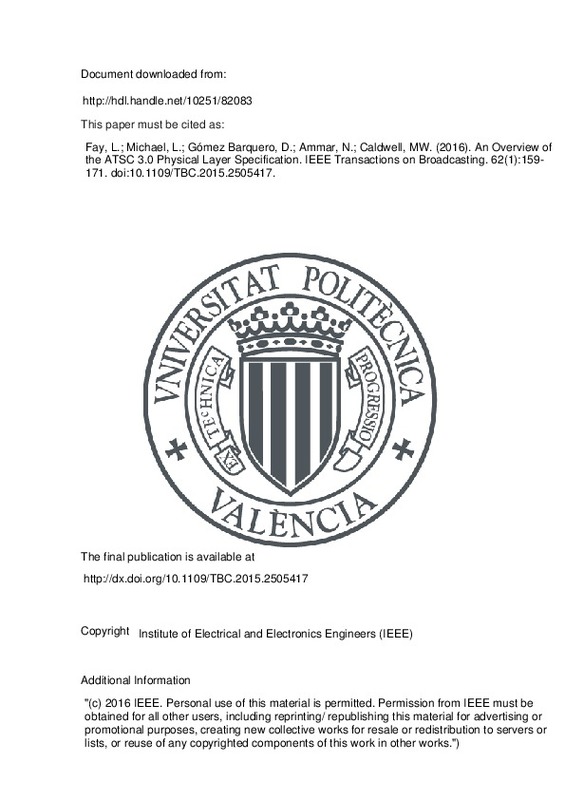JavaScript is disabled for your browser. Some features of this site may not work without it.
Buscar en RiuNet
Listar
Mi cuenta
Estadísticas
Ayuda RiuNet
Admin. UPV
An Overview of the ATSC 3.0 Physical Layer Specification
Mostrar el registro completo del ítem
Fay, L.; Michael, L.; Gómez Barquero, D.; Ammar, N.; Caldwell, MW. (2016). An Overview of the ATSC 3.0 Physical Layer Specification. IEEE Transactions on Broadcasting. 62(1):159-171. doi:10.1109/TBC.2015.2505417
Por favor, use este identificador para citar o enlazar este ítem: http://hdl.handle.net/10251/82083
Ficheros en el ítem
Metadatos del ítem
| Título: | An Overview of the ATSC 3.0 Physical Layer Specification | |
| Autor: | Fay, Luke Michael, Lachlan Ammar, Nejib Caldwell, M. Winston | |
| Entidad UPV: |
|
|
| Fecha difusión: |
|
|
| Resumen: |
This paper provides an overview of the physical layer specification of Advanced Television Systems Committee (ATSC) 3.0, the next-generation digital terrestrial broadcasting standard. ATSC 3.0 does not have any ...[+]
|
|
| Palabras clave: |
|
|
| Derechos de uso: | Reserva de todos los derechos | |
| Fuente: |
|
|
| DOI: |
|
|
| Editorial: |
|
|
| Versión del editor: | http://dx.doi.org/10.1109/TBC.2015.2505417 | |
| Descripción: |
|
|
| Tipo: |
|







![[Cerrado]](/themes/UPV/images/candado.png)


